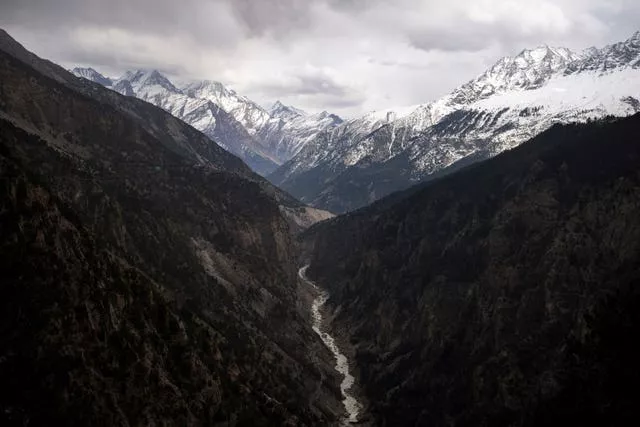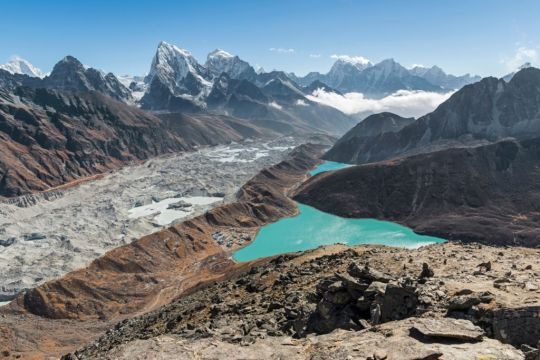Glaciers in the Hindu Kush and Himalayan mountain ranges could lose up to 80% of their current volume this century without a sharp reduction in greenhouse gas emissions, according to a new report.
The report by the Kathmandu-based International Centre for Integrated Mountain Development warns that flash floods and avalanches would grow more likely and the availability of fresh water would be affected for nearly two billion people who live downstream of 12 rivers that originate in the mountains.
Ice and snow in the mountain ranges is an important source of water for the rivers, which flow through 16 countries in Asia and provide fresh water to 240 million people in the mountains and another 1.65 billion downstream.
“The people living in these mountains who have contributed next to nothing to global warming are at high risk due to climate change,” said Amina Maharjan, a migration specialist and one of the report’s authors.

“Current adaptation efforts are wholly insufficient and we are extremely concerned that without greater support, these communities will be unable to cope.”
Earlier reports have found the cryosphere – regions on Earth covered by snow and ice – are among the worst affected by climate change, with recent research finding that Mount Everest’s glaciers have lost 2,000 years of ice in just the past 30 years.
Among the key findings from Tuesday’s report are that the Himalayan glaciers have disappeared 65% faster since 2010 than in the previous decade and reducing snow cover due to global warming will result in less fresh water for people living downstream.
The study found that 200 glacier lakes across these mountains are deemed dangerous and the region could see a significant increase in glacial lake outburst floods by the end of the century.

It says changes to the glaciers, snow and permafrost of the Hindu Kush Himalayan region driven by global warming are “unprecedented and largely irreversible”.
“Once ice melts in these regions, it’s very difficult to put it back to its frozen form,” said Pam Pearson, director of the International Cryosphere Climate Initiative, who was not involved with the report.
“It’s like a big ship in the ocean. Once the ice starts going, it’s very hard to stop. So, with glaciers, especially the big glaciers in the Himalayas, once they start losing mass, that’s going to continue for a really long time before it can stabilise.”







